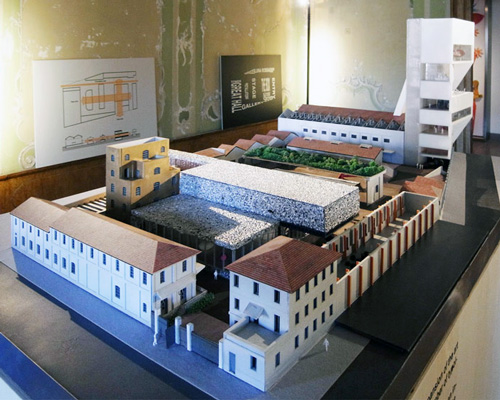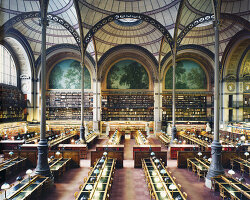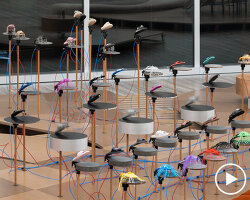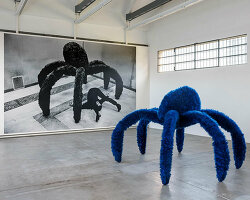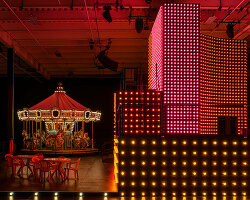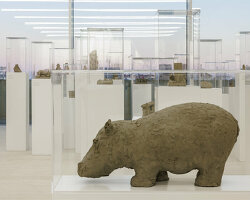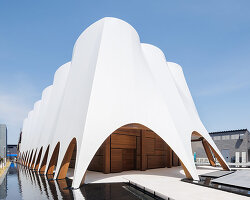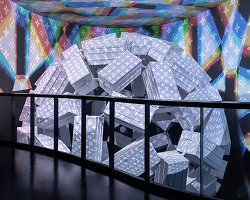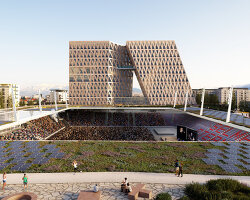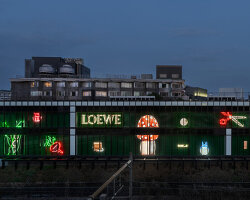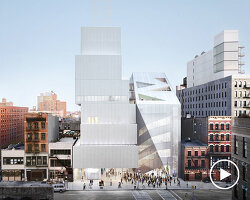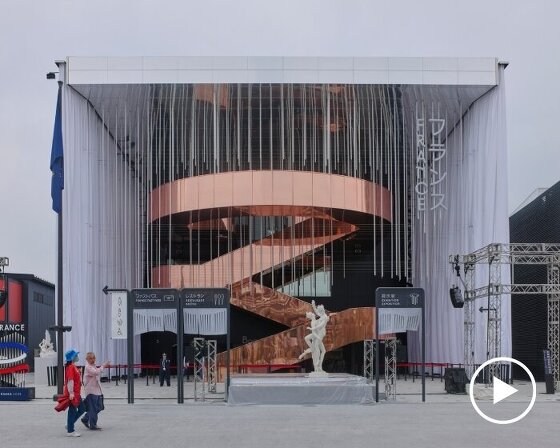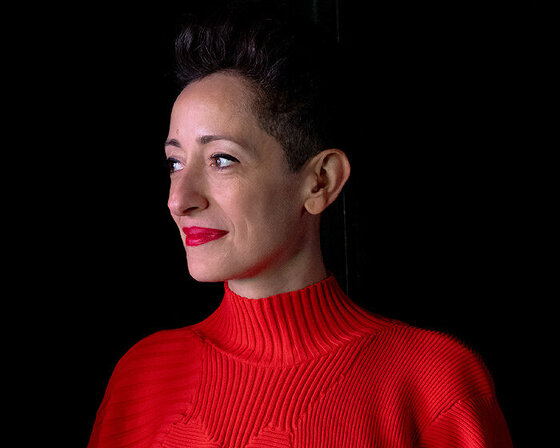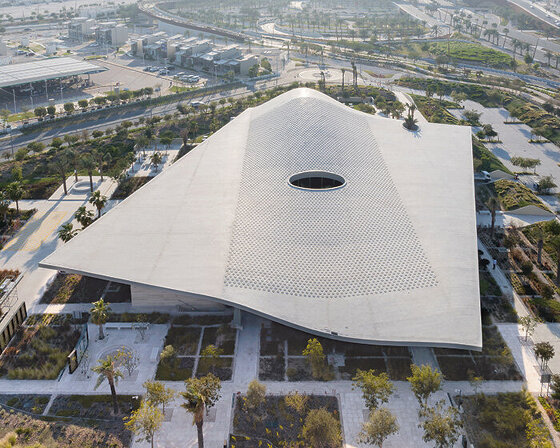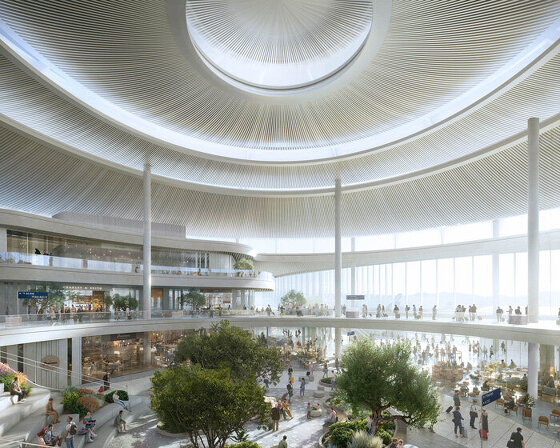‘fondazione prada’ by OMA, largo isarco, milan, italy image © designboom
UPDATE: on january 22nd 2015, it was announced that the headquarters of fondazione prada will open in milan on saturday may 9, 2015.
while at the venice art biennale earlier this summer, designboom visited ‘OMA with/for prada‘, a retrospective look at the pair’s recent collaborations, including the new fondazione prada in largo isarco, milan. the display of intricate scale models and prototypes comes at a poignant time, with construction of the headquarters now underway. OMA’s scheme, which will see the refurbishment and expansion of the 20th century distillery, is set for completion in 2014.
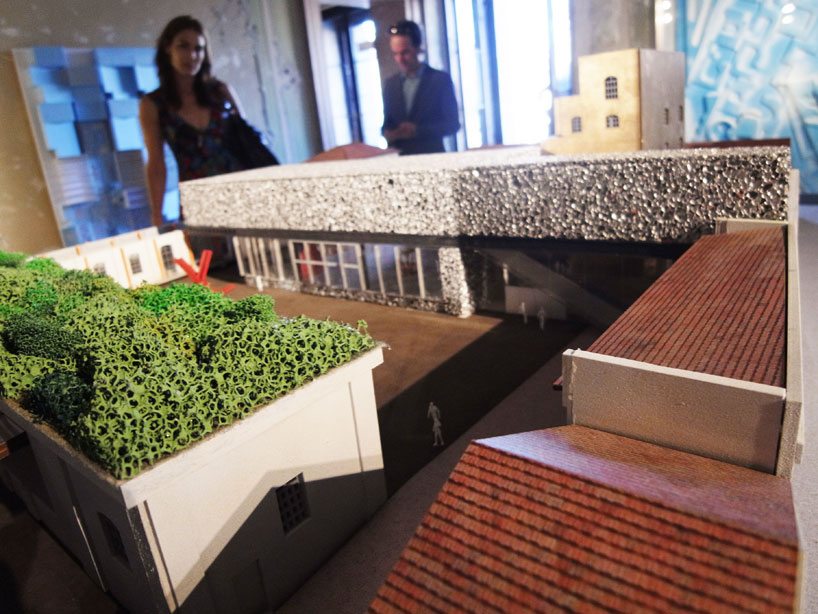 detail view of model image © designboom
detail view of model image © designboom
located in south milan, the design aims to generate a new gallery typology that speaks to the evolving nature and interpretations of art, fashion, design, technology and cinema. refined and dynamic, the structure seeks to become an organic expansion of the fondazione’s collection, while taking into account the historical context of both the brand and the site. once realized, the complex will house a selection of works from the permanent collection, temporary exhibitions, large-scale installations and the archives of prada and lune rossa.
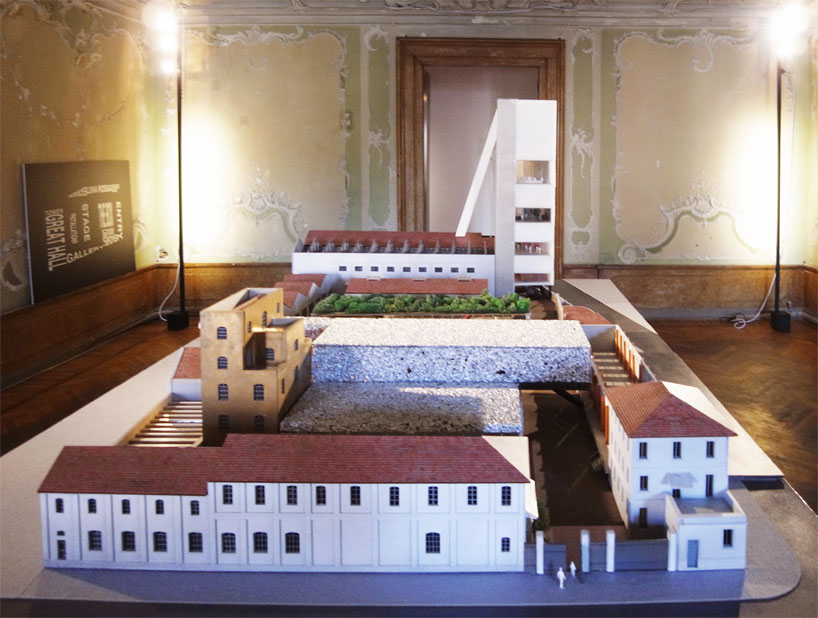 the existing structures running the perimeter of the site will remain image © designboom
the existing structures running the perimeter of the site will remain image © designboom
within the perimeter of the complex exists two freestanding structures: one vertical unit that will remain, and one unstable structure that will be demolished and converted into a central open-air courtyard. an existing great hall will be adapted for curatorial ingenuity, while maintaining many of the qualities and characteristics intrinsic to the industrial site. in its basement, the collection will be arranged in a hybrid of storage and display, where work can be unpacked or partially revealed to the public.
 physical model of tower image © designboom
physical model of tower image © designboom
of three new structures, a ten-storey tower is the most radical. conceived as an environment for artists and curators, the unit proposes to offer fundamentally different architectural conditions where creation, collaboration and display come together. an autonomous ‘black box’ will provide a meeting ground for art, media, technology and the public. opening to animate and interact with the adjacent courtyard, the structure will host open-air movies, and performances, while connecting various components of the immediate and international art scene.
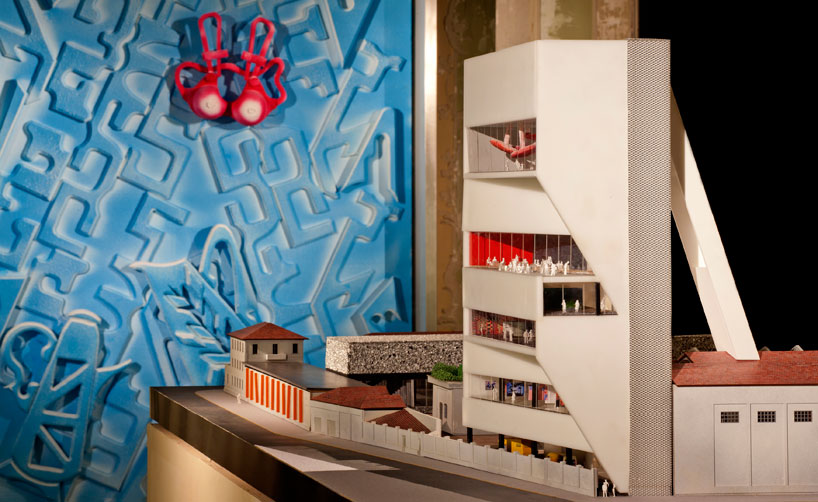 view of tower and surrounding structures image courtesy of fondazione prada / © attilio maranzano
view of tower and surrounding structures image courtesy of fondazione prada / © attilio maranzano
the final addition is an ‘ideal museum’, a space that combines the intimate and sub-divided qualities of a traditional museum with a vast and open day-lit hall. slotted for large-scale installations, the gallery will be equipped with the necessary technologies to participate in the world-wide exchange of exhibitions. four ‘houses’ that face the courtyard to the north and an abandoned garden to the south will accommodate administrative office and permanent galleries.
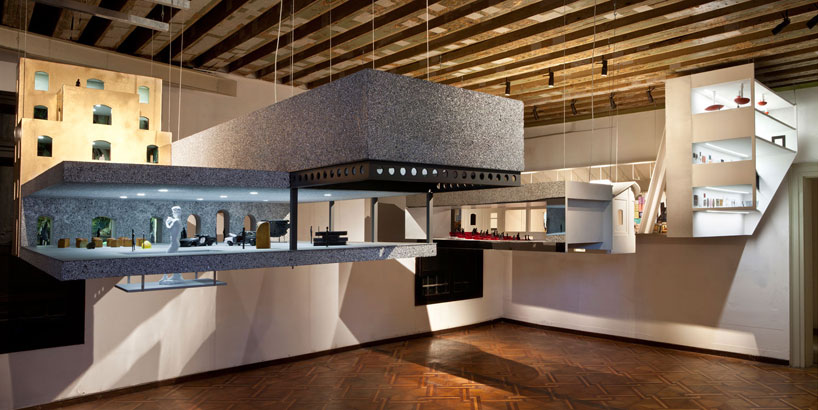 enlarged sections of the model hang around the exhibition image courtesy of fondazione prada / © attilio maranzano
enlarged sections of the model hang around the exhibition image courtesy of fondazione prada / © attilio maranzano
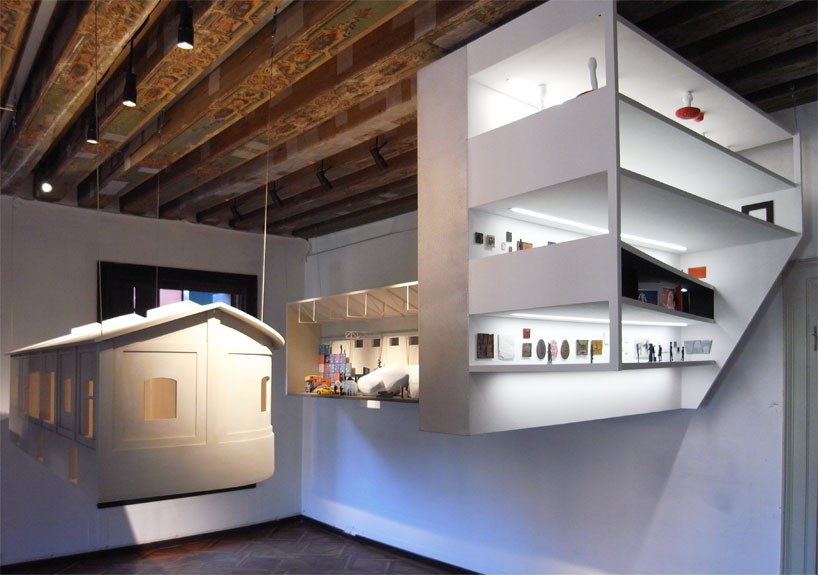 detail of tower image © designboom
detail of tower image © designboom
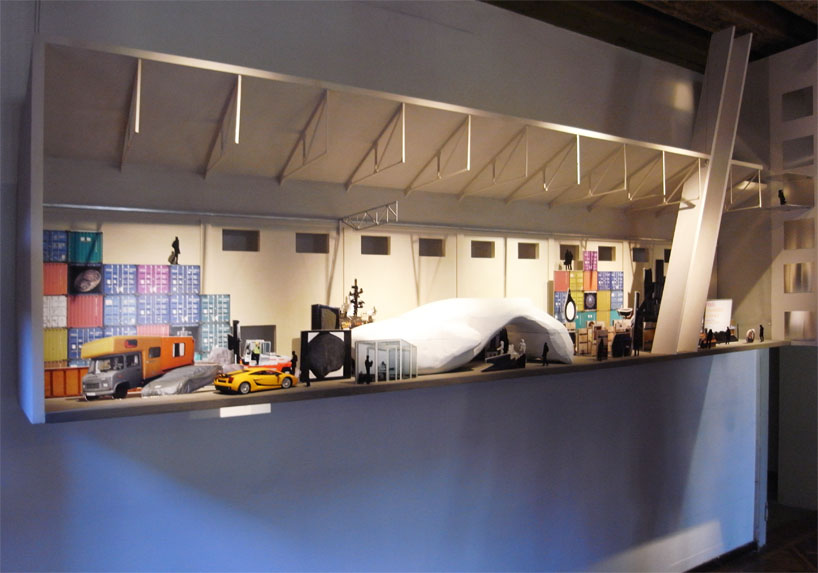 detail of model image © designboom
detail of model image © designboom
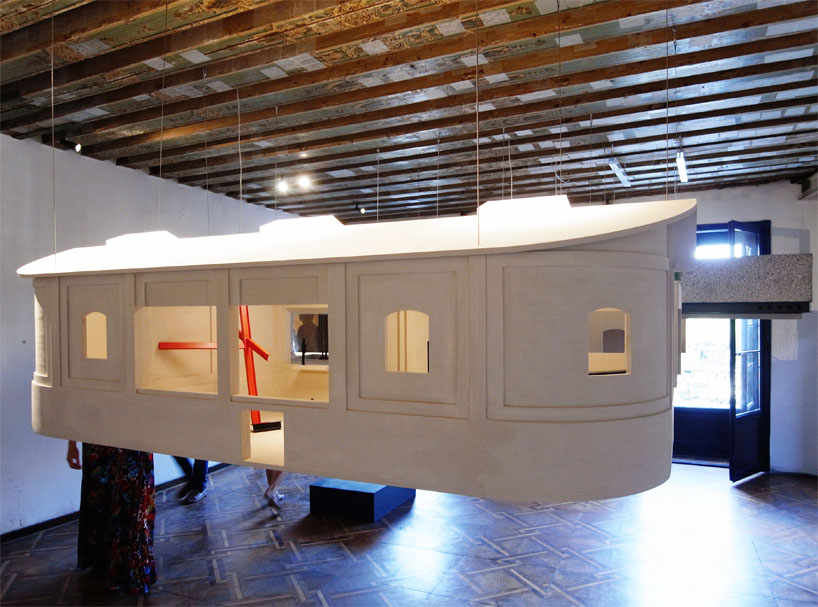 one of the existing structures image © designboom
one of the existing structures image © designboom
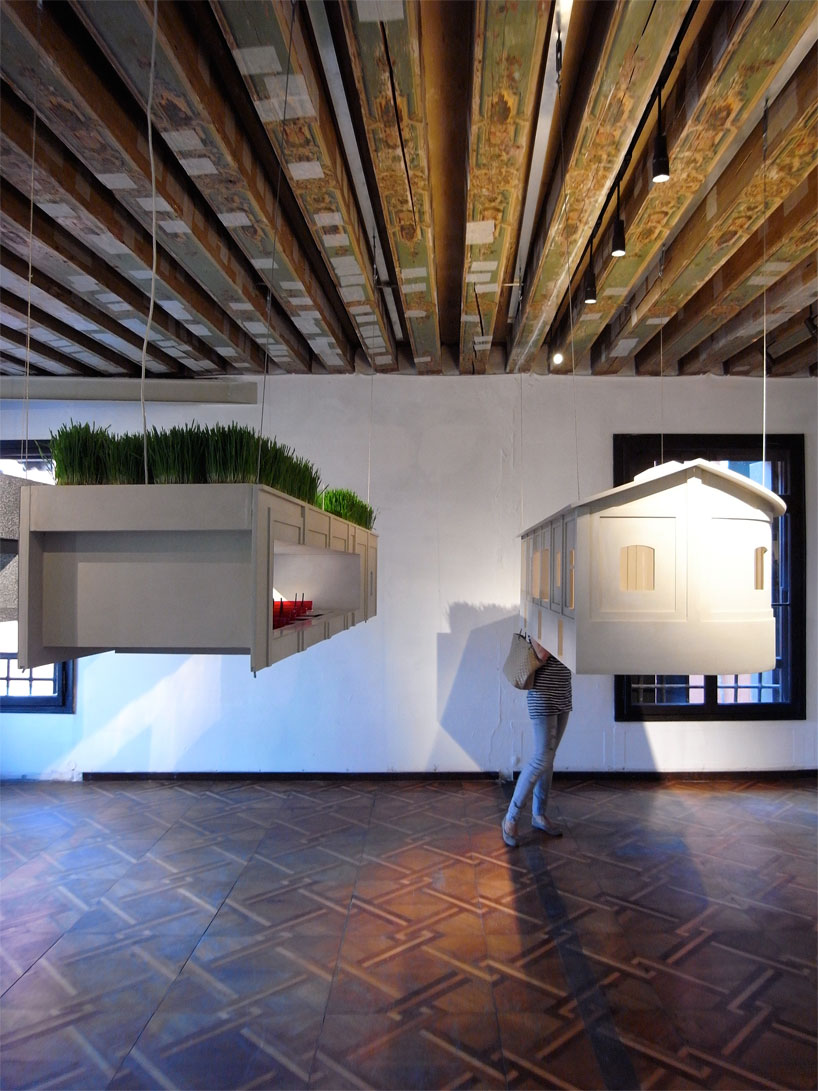 contrasting new and old elements image © designboom
contrasting new and old elements image © designboom
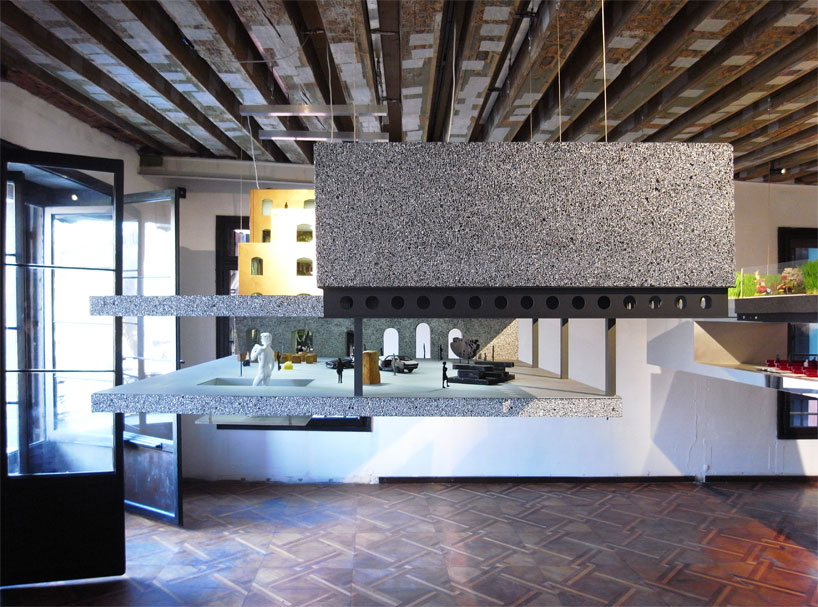 detail of ‘ideal museum’ image © designboom
detail of ‘ideal museum’ image © designboom
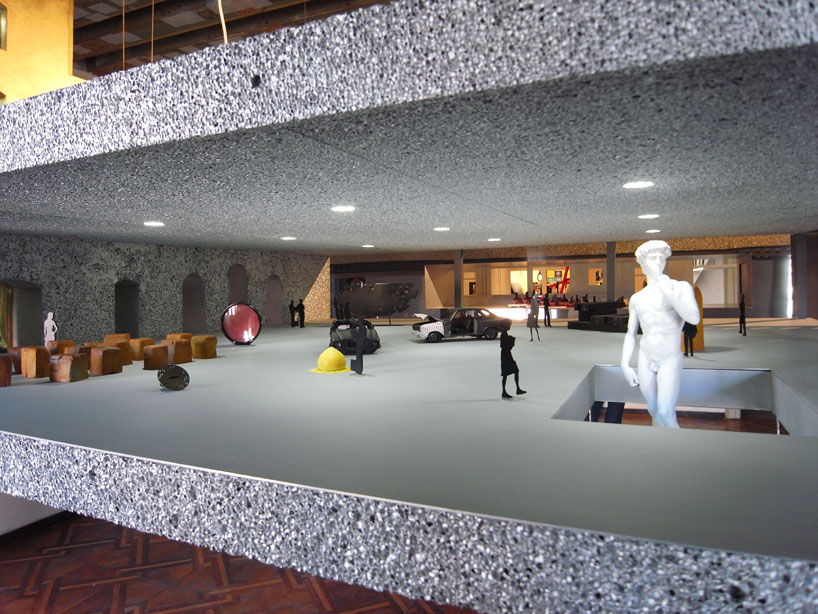 view inside model of ‘ideal museum’ image © designboom
view inside model of ‘ideal museum’ image © designboom
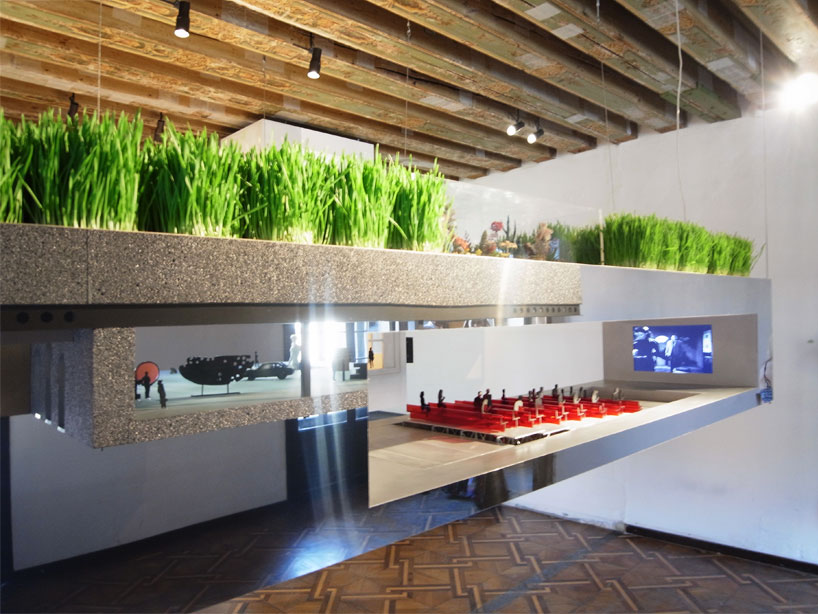 model of ‘black box’ image © designboom
model of ‘black box’ image © designboom
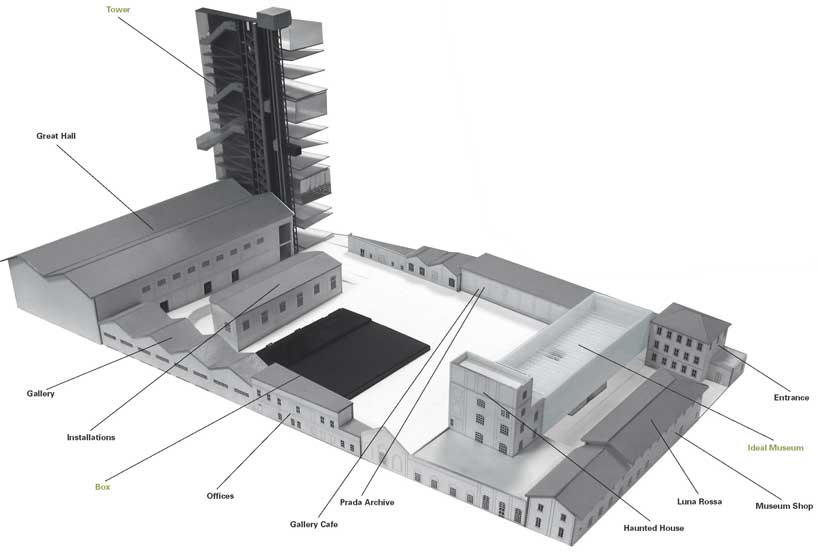 diagram of site and program image © OMA
diagram of site and program image © OMA
diagrams and details from fondazione prada’s catalogue:
 ‘ideal museum’ image © designboom
‘ideal museum’ image © designboom
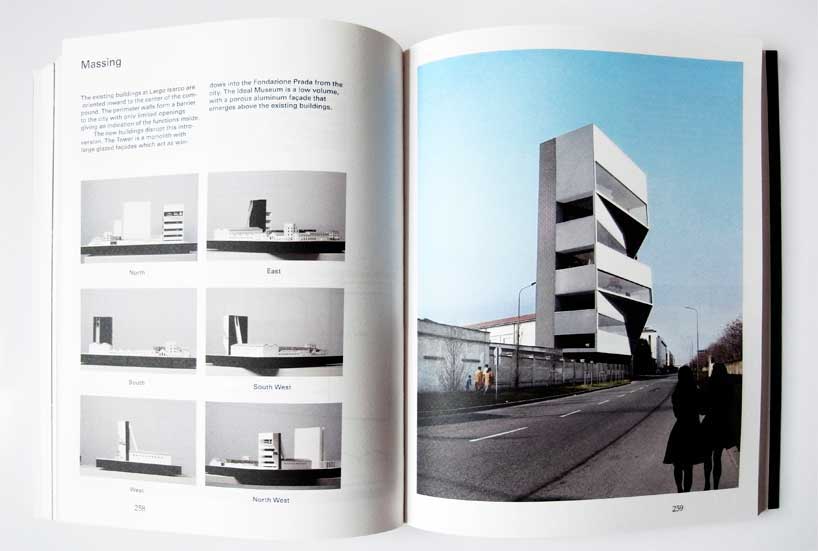 ‘massing’ image © designboom
‘massing’ image © designboom
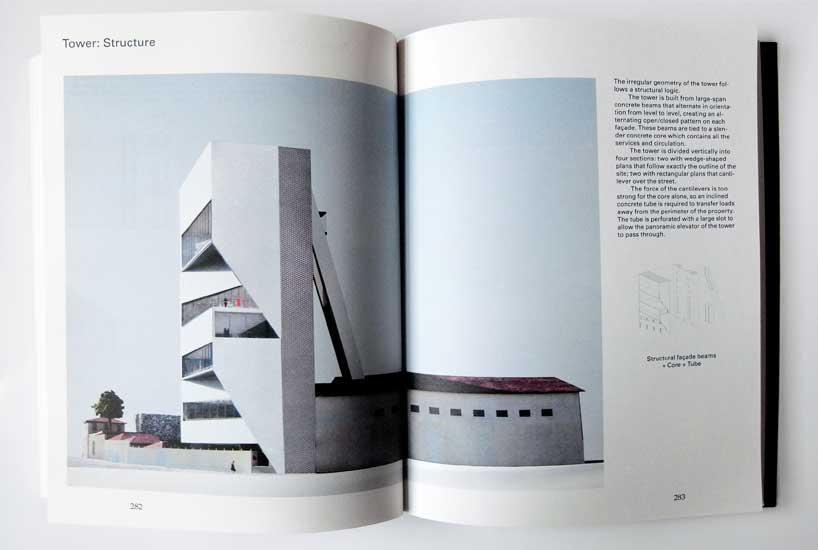 ‘tower: structure’ image © designboom
‘tower: structure’ image © designboom
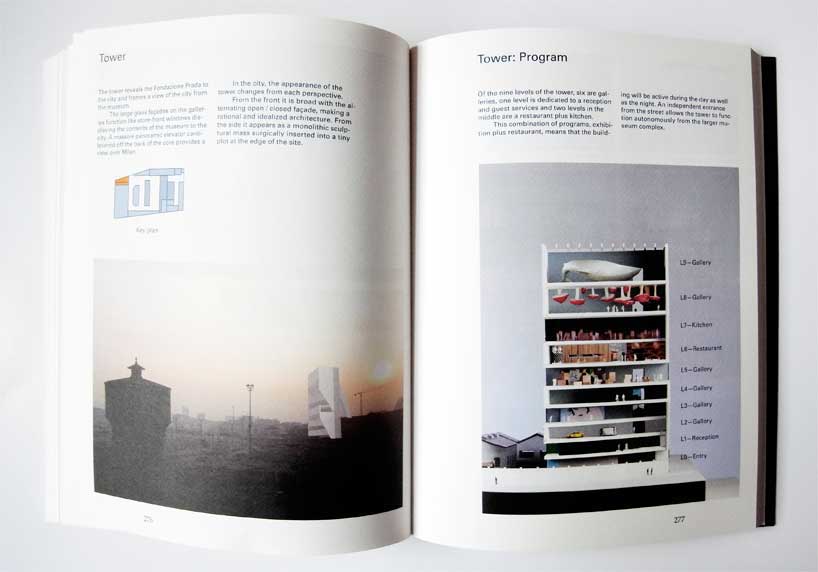 ‘tower’ image © designboom
‘tower’ image © designboom
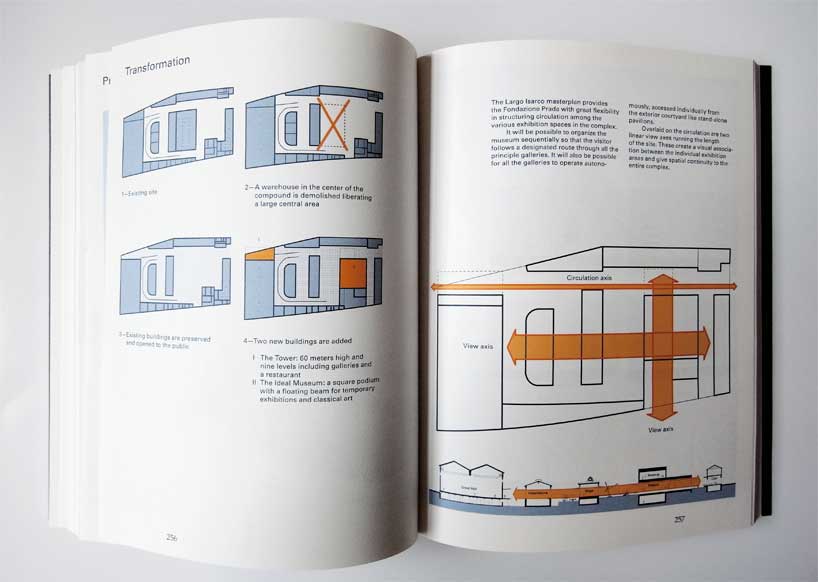 ‘transformation’ image © designboom
‘transformation’ image © designboom
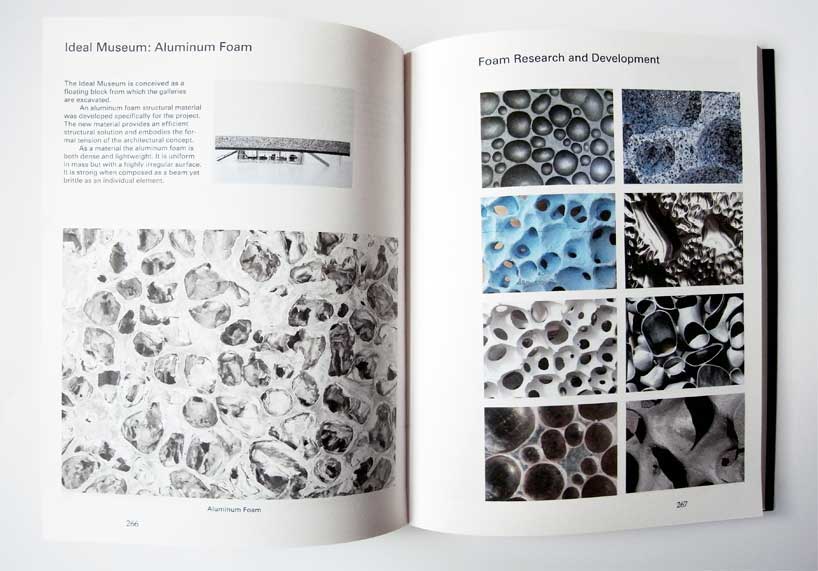 aluminum foam cladding for more information, see here image © designboom
aluminum foam cladding for more information, see here image © designboom
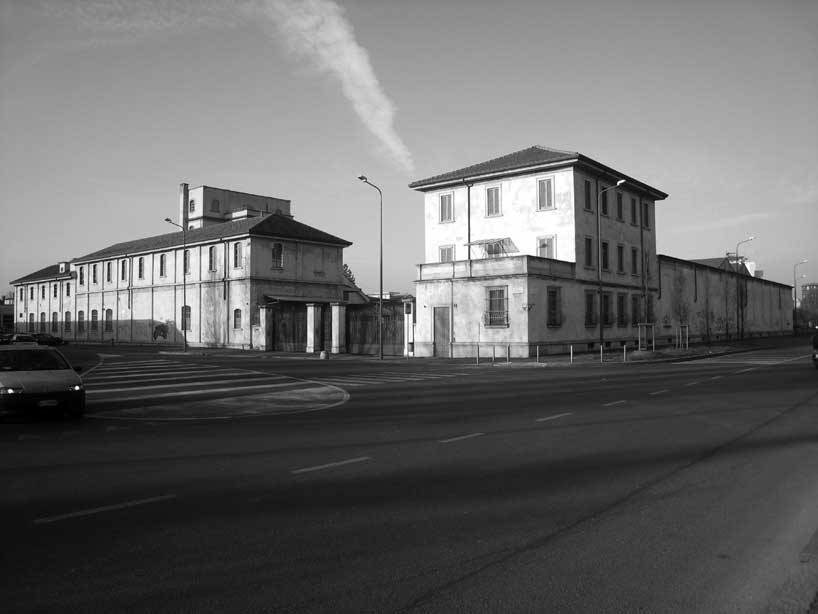 existing site image © roberto marossi / courtesy fondazione prada
existing site image © roberto marossi / courtesy fondazione prada
at the festarch 2011 conferences in perugia, italy, organized by international publication abitare, OMA’s founder and principal architect rem koolhaas spoke about our morbid obsession with preservation. he addressed effects of our increasing use of spaces that are not new, and which are currently being used for purposes in which they were not originally built as is the case with the firm’s restoration and expansion of the fondazione prada headquarters in largo isarco. koolhaas turned to the art scene, focusing on the topic of industrial buildings being transformed to house large scale installations and the preference of artists to exhibit their work in spaces where architectural intervention is minimal, stating that there is ‘no confrontation between architecture and art…’.
